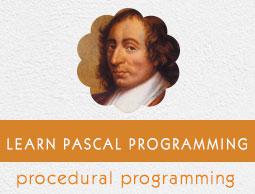Pascal - Sets
A set is a collection of elements of same type. Pascal allows defining the set data type. The elements in a set are called its members. In mathematics, sets are represented by enclosing the members within braces{}. However, in Pascal, set elements are enclosed within square brackets [], which are referred as set constructor.
Defining Set Types and Variables
Pascal Set types are defined as
type
set-identifier = set of base type;
Variables of set type are defined as
var
s1, s2, ...: set-identifier;
or,
s1, s2...: set of base type;
Examples of some valid set type declaration are −
type
Days = (mon, tue, wed, thu, fri, sat, sun);
Letters = set of char;
DaySet = set of days;
Alphabets = set of 'A' .. 'Z';
studentAge = set of 13..20;
Set Operators
You can perform the following set operations on Pascal sets.
| Sr.No |
Operations & Descriptions |
| 1 |
Union
This joins two sets and gives a new set with members from both sets. |
| 2 |
Difference
Gets the difference of two sets and gives a new set with elements not common to either set. |
| 3 |
Intersection
Gets the intersection of two sets and gives a new set with elements common to both sets. |
| 4 |
Inclusion
A set P is included in set Q, if all items in P are also in Q but not vice versa. |
| 5 |
Symmetric difference
Gets the symmetric difference of two sets and gives a set of elements, which are in either of the sets and not in their intersection. |
| 6 |
In
It checks membership. |
Following table shows all the set operators supported by Free Pascal. Assume that S1 and S2 are two character sets, such that −
S1 := ['a', 'b', 'c'];
S2 := ['c', 'd', 'e'];
| Operator |
Description |
Example |
| + |
Union of two sets |
S1 + S2 will give a set
['a', 'b', 'c', 'd', 'e']
|
| - |
Difference of two sets |
S1 - S2 will give a set
['a', 'b']
|
| * |
Intersection of two sets |
S1 * S2 will give a set
['c']
|
| >< |
Symmetric difference of two sets |
S1 >< S2 will give a set ['a', 'b', 'd', 'e'] |
| = |
Checks equality of two sets |
S1 = S2 will give the boolean value False |
| <> |
Checks non-equality of two sets |
S1 <> S2 will give the boolean value True |
| <= |
Contains (Checks if one set is a subset of the other) |
S1 <= S2 will give the boolean value False |
| Include |
Includes an element in the set; basically it is the Union of a set and an element of same base type |
Include (S1, ['d']) will give a set
['a', 'b', 'c', 'd']
|
| Exclude |
Excludes an element from a set; basically it is the Difference of a set and an element of same base type |
Exclude (S2, ['d']) will give a set
['c', 'e']
|
| In |
Checks set membership of an element in a set |
['e'] in S2 gives the boolean value True |
Example
The following example illustrates the use of some of these operators −
program setColors;
type
color = (red, blue, yellow, green, white, black, orange);
colors = set of color;
procedure displayColors(c : colors);
const
names : array [color] of String[7]
= ('red', 'blue', 'yellow', 'green', 'white', 'black', 'orange');
var
cl : color;
s : String;
begin
s:= ' ';
for cl:=red to orange do
if cl in c then
begin
if (s<>' ') then s :=s +' , ';
s:=s+names[cl];
end;
writeln('[',s,']');
end;
var
c : colors;
begin
c:= [red, blue, yellow, green, white, black, orange];
displayColors(c);
c:=[red, blue]+[yellow, green];
displayColors(c);
c:=[red, blue, yellow, green, white, black, orange] - [green, white];
displayColors(c);
c:= [red, blue, yellow, green, white, black, orange]*[green, white];
displayColors(c);
c:= [red, blue, yellow, green]><[yellow, green, white, black];
displayColors(c);
end.
When the above code is compiled and executed, it produces the following result −
[ red , blue , yellow , green , white , black , orange]
[ red , blue , yellow , green]
[ red , blue , yellow , black , orange]
[ green , white]
[ red , blue , white , black]


